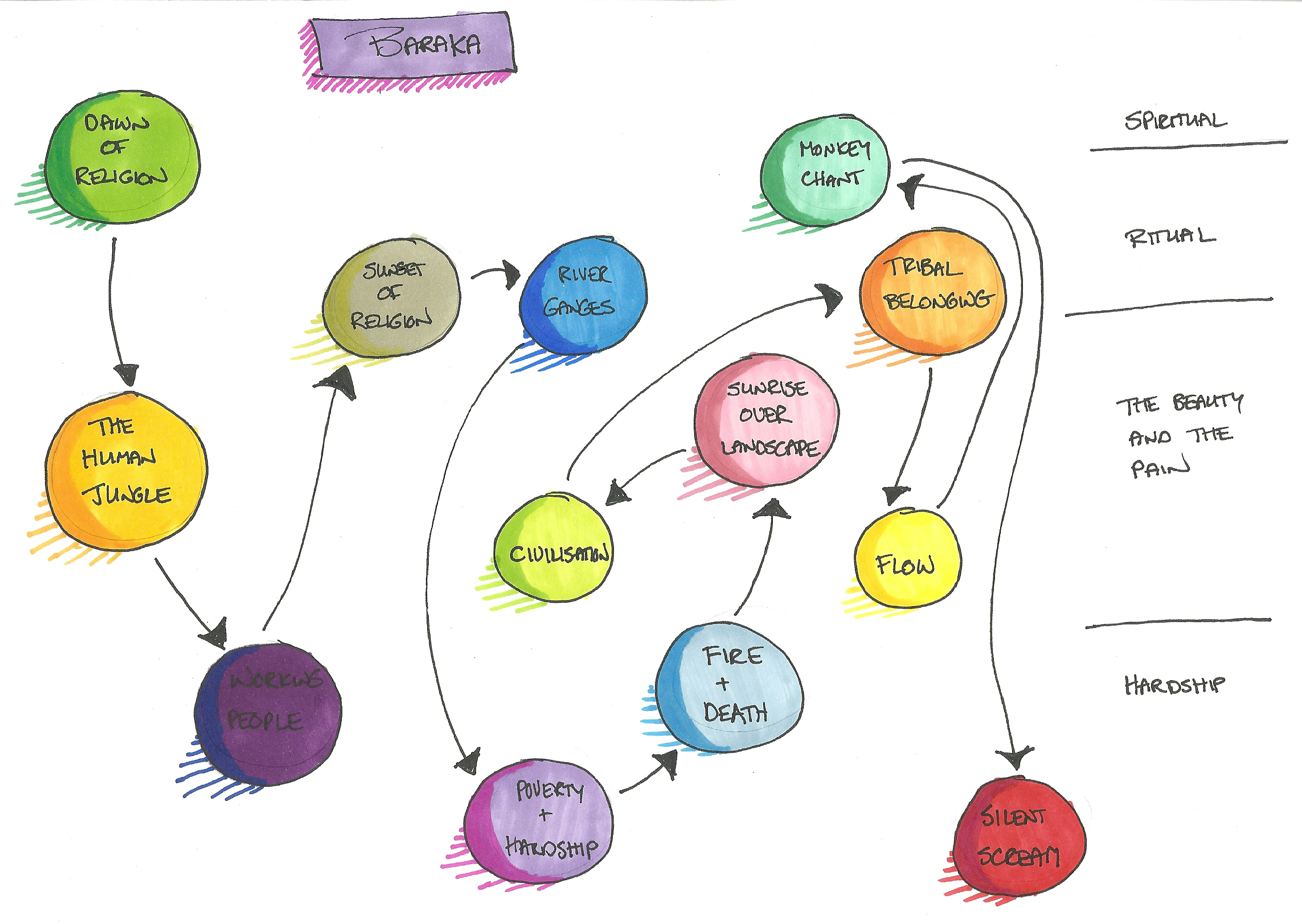For this exercise I watched the film Baraka which was both directed and filmed by Ron Fricke. It was released in 1992 and was called a non-narrative documentary by its producers. The film was shot in 25 different countries and six continents.
The film is made up of a series of themes that involve humanity and/or nature. There is no narrative or acting – all the images are set to music that compliments the images. According to the producer, Mark Magidson, “The goal of the film was to reach past language, nationality, religion and politics and speak to the inner viewer.”
The themes include:
- religion, encompassing a wide number of religions
- the hardships of people living in poverty
- people working in factories and commuting to/from work in masses
- cramped living conditions
- life on the Ganges River
- the ruins of ancient civilisations
- natural land- and sea-scapes
- tribal living
- Monkey chant at Gunung Kawi Temple in Bali
My experience of the film was very definitely an emotional one. This was a very deep visual and aural reflection on humanity; the sacred, the cruel, the beautiful and the mundane aspects of our existence. As the movie progressed from one theme to the next, it was capable of taking me on a journey through wonder, despair, hope and confusion. You get to experience what is both good and bad about humanity in a way that neither comments nor judges.
The most appealing part of the movie, and I believe this simply to be a personal preference, are the sections dealing with religions. The visual picture that is painted shows the aspects of religions that are meditative and spiritual. In some instances the inward-looking images are quiet and peaceful (Buddhists and Christians praying) and in others they capture the motion that very often accompanies meditative states, for example the backwards/forwards swaying of Orthodox Jews at the Wailing Wall or the circular motion of the Whirling Dervishes of Mevlevi Order.
Clearly the music supported the visual images and was then able to enhance the emotional experience. To add to the connected feeling of the religious section, there were visually complimentary cuts, so at the end of one shot you see the close up of a Rastafari’s hair and then the next shot is a close up of a Orthodox Jew holding what looks like a rope but is very similar to the dreadlocks of the Rastafari, while he reads.
There was also a focus on showing the ritual involved in religion; dressing, spreading incense, kissing significant items, touching and parading these items, bowing, kneeling and so on. It showed the commonality and the human need to engage in ritual to experience a sense of spirituality.
When I first watched the film, I was trying to find the meaning behind the images. I kept waiting for the message that didn’t really ever arrive. It showed the good and the bad (to put it very basically) but this was not a revelation as we all know that humanity has both capabilities. At the end of the film there is a person who mimes a silent scream and this was as close as the film came to a message – one that I couldn’t be sure of. Did the scream mean that we are on a destructive path? If this was the message, the preceding visuals did not seem to support it.
Probably the most lasting impression of the film happened in the light of all the recent attacks in Europe that have been linked with religious extremism. The film was a reminder of the spiritual and personal aspects of religion that is so far removed from what we are seeing and reading in the media today.
I made a diagram of the structure of the film, however I consider the structure to be non-complex themes that could have been told in almost any order. From the perspective of emotions, the structure is straight-forward and I believe this was intentional. Creating a predictable structure allows the viewer to relax into it’s predictability and be taken on a safe journey that allows them to experience the visual poetry without having to prepare themselves for surprising or alarming twists and turns as the film progresses.
In representing the structure diagrammatically, I tried to classify the different scenes according to the notions of spirituality, ritual, beauty and pain (together) and hardship.

Bibliography
Baraka [feature film, DVD] Dir Ron Fricke. Magidson Films, USA. 1992. 96 min.
http://www.barakasamsara.com/baraka/about [accessed 25/07/2016]

I just love your diagram so much!!!